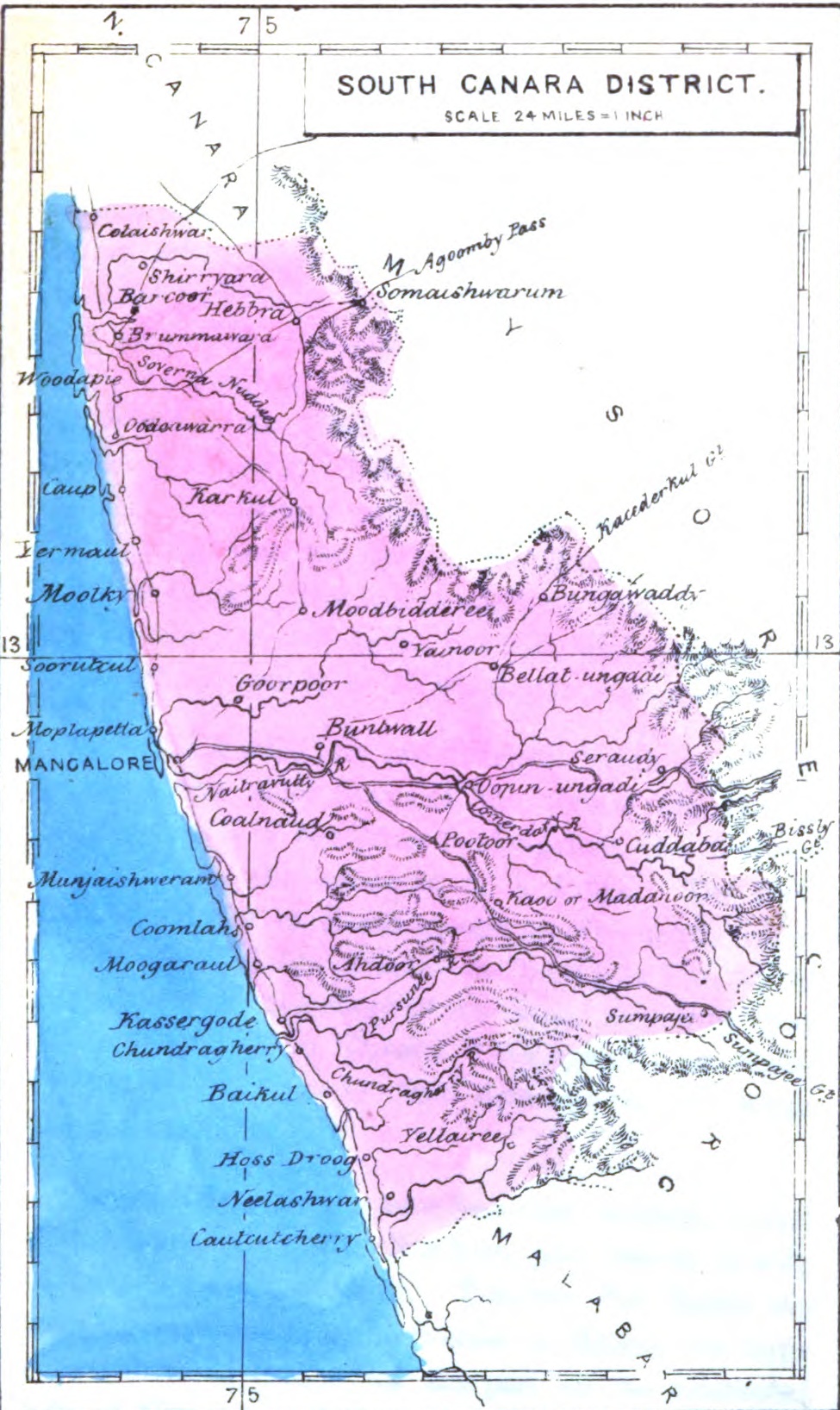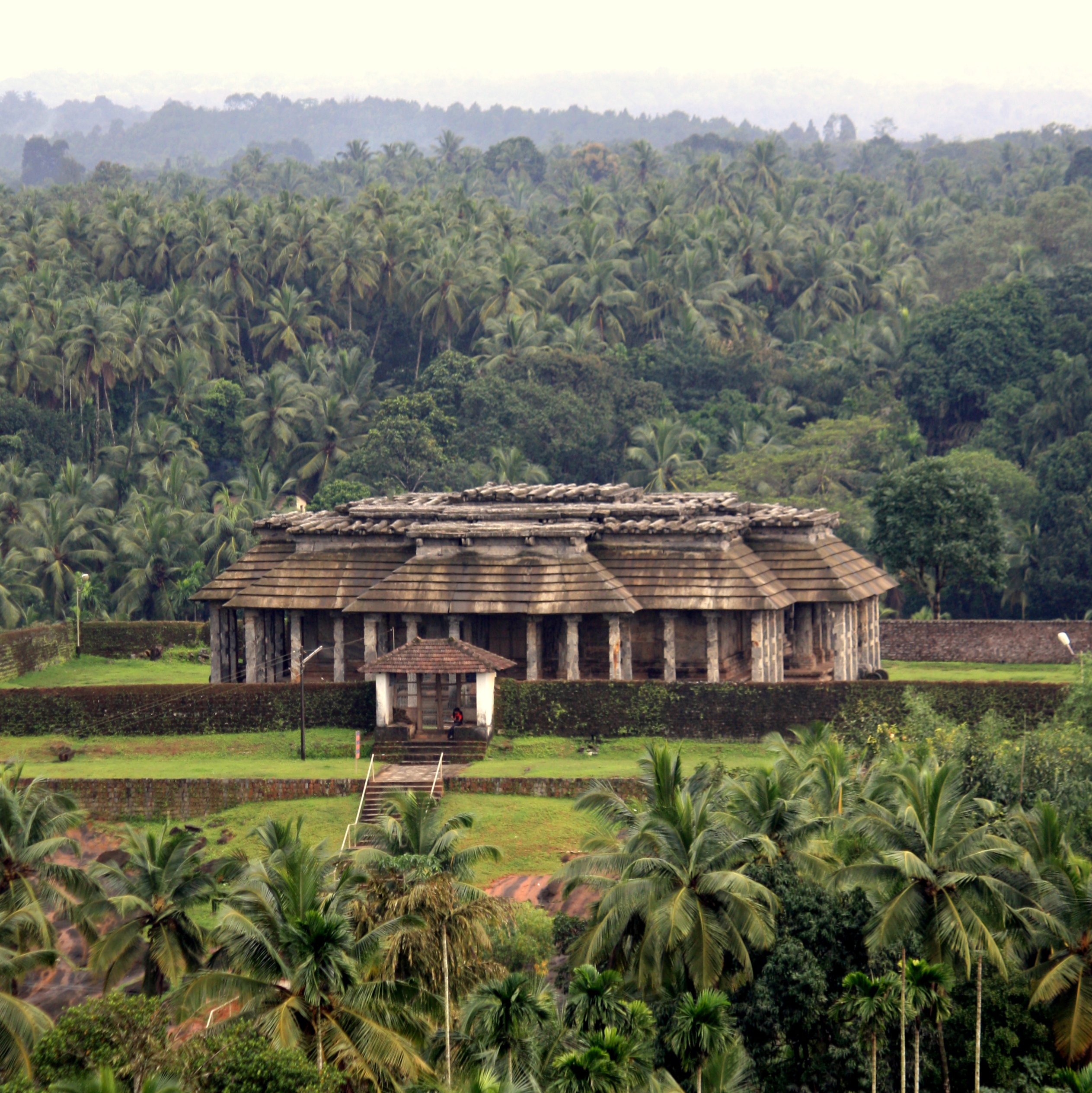|
Vadirajatirtha
Sri Vadiraja Teertharu (1480 – 1600) was a Dvaita philosopher, poet, traveller and mystic. A polymath of his time, he authored many works, often polemical, on Madhva theology and metaphysics. Additionally, he composed numerous poems and as the pontiff of Sodhe Mutt, renovated the temple complex at Udupi and established the ''Paryaya'' system of worship. He is also credited with enriching the Kannada literature of the time by translating Madhvacharya's works to Kannada, giving impetus and contributing to the Haridasa movement. He has influenced both Carnatic and Hindustani music through his compositions. His compositions are mainly in Kannada and Sanskrit. His mudra is 'Hayavadana'. His works are characterised by their poetic flourishes, incisive wit and humour. Life Vadirajaru was born as Bhuvaraha in Huvinakere, a village in the Kundapura taluk. He was ordained as a monk at the age of 8 and placed into the care of Vidyanidhi Tirtharu and later Vagisha Tirtharu , who ... [...More Info...] [...Related Items...] OR: [Wikipedia] [Google] [Baidu] |
Haridasa
The Haridasa Bhakti Sahitya devotional movement (sampradaya) originated in Karnataka, India, after Madhvacharya, and spread to eastern states such as Bengal and Assam of medieval India. Over a span of nearly six centuries, several saints and mystics helped shape the culture, philosophy and art of South India in general and Karnataka in particular by exerting considerable spiritual influence over the masses and kingdoms that ruled South India.Sharma (1961), p. 514 This movement was ushered in by the ''Haridasas'' (''lit'' "servants of Lord Hari") and took shape in the 13th century – 14th century CE period, prior to and during the early rule of the Vijayanagara Empire. The main objective of this movement was to propagate the Dvaita philosophy of Madhvacharya (''Madhva Siddhanta'') to the masses through a literary medium known as ''Dasa Sahitya'' (''lit'' "literature of the servants of the lord"). Prominent Hindu philosophers, poets and scholars such as Sripadaraya, Vyasathi ... [...More Info...] [...Related Items...] OR: [Wikipedia] [Google] [Baidu] |
Kannada
Kannada (; ಕನ್ನಡ, ), originally romanised Canarese, is a Dravidian language spoken predominantly by the people of Karnataka in southwestern India, with minorities in all neighbouring states. It has around 47 million native speakers, and was additionally a second or third language for around 13 million non-native speakers in Karnataka. Kannada was the court language of some of the most powerful dynasties of south and central India, namely the Kadambas, Chalukyas, Rashtrakutas, Yadava Dynasty or Seunas, Western Ganga dynasty, Wodeyars of Mysore, Nayakas of Keladi Hoysalas and the Vijayanagara empire. The official and administrative language of the state of Karnataka, it also has scheduled status in India and has been included among the country's designated classical languages.Kuiper (2011), p. 74R Zydenbos in Cushman S, Cavanagh C, Ramazani J, Rouzer P, ''The Princeton Encyclopedia of Poetry and Poetics: Fourth Edition'', p. 767, Princeton Unive ... [...More Info...] [...Related Items...] OR: [Wikipedia] [Google] [Baidu] |
Hinduism
Hinduism () is an Indian religion or '' dharma'', a religious and universal order or way of life by which followers abide. As a religion, it is the world's third-largest, with over 1.2–1.35 billion followers, or 15–16% of the global population, known as Hindus. The word ''Hindu'' is an exonym, and while Hinduism has been called the oldest religion in the world, many practitioners refer to their religion as '' Sanātana Dharma'' ( sa, सनातन धर्म, lit='the Eternal Dharma'), a modern usage, which refers to the idea that its origins lie beyond human history, as revealed in the Hindu texts. Another endonym is ''Vaidika dharma'', the dharma related to the Vedas. Hinduism is a diverse system of thought marked by a range of philosophies and shared concepts, rituals, cosmological systems, pilgrimage sites, and shared textual sources that discuss theology, metaphysics, mythology, Vedic yajna, yoga, agamic rituals, and temple building, among other to ... [...More Info...] [...Related Items...] OR: [Wikipedia] [Google] [Baidu] |
Vyasatirtha
Vyāsatīrtha (. 1460 – 1539), also called ''Vyasaraja'' or ''Chandrikacharya'', was a Hindu philosopher, scholar, polemicist, commentator and poet belonging to the Madhwacharya's Dvaita order of Vedanta. As the patron saint of the Vijayanagara Empire, Vyasatirtha was at the forefront of a golden age in Dvaita which saw new developments in dialectical thought, growth of the Haridasa literature under bards like Purandara Dasa and Kanaka Dasa and an amplified spread of Dvaita across the subcontinent. Three of his polemically themed doxographical works ''Nyayamruta'', ''Tatparya Chandrika'' and ''Tarka Tandava'' (collectively called ''Vyasa Traya'') documented and critiqued an encyclopaedic range of sub-philosophies in Advaita, Visistadvaita, Mahayana Buddhism, Mimamsa and Nyaya, revealing internal contradictions and fallacies. His ''Nyayamruta'' caused a significant stir in the Advaita community across the country requiring a rebuttal by Madhusudhana Saraswati through hi ... [...More Info...] [...Related Items...] OR: [Wikipedia] [Google] [Baidu] |
South Canara
South Canara was a district of the Madras Presidency of British India, located at . It comprised the towns of Kassergode and Udipi and adjacent villages, with the capital in Mangalore city. South Canara was one of the most heterogeneous areas of Madras Presidency, with Tulu, Malayalam, Kannada, Konkani, Marathi, Urdu, and Beary languages being spoken side by side. It was succeeded by the Tulu-speaking areas of Dakshina Kannada district, the Malayalam-speaking area of Kasaragod district and the Amindivi islands sub-division of the Laccadives, in the year 1956. Geography Mangalore was the administrative headquarters of the district. The district covered an area of . South Canara District was bordered by North Canara to north, the princely state of Mysore to east, Coorg state to southeast, Malabar District to south, and Arabian Sea to west. South Canara was one of the two districts on the western coast (Malabar coast) of Madras Presidency along with Malabar District (otherwi ... [...More Info...] [...Related Items...] OR: [Wikipedia] [Google] [Baidu] |
Jainism
Jainism ( ), also known as Jain Dharma, is an Indian religions, Indian religion. Jainism traces its spiritual ideas and history through the succession of twenty-four tirthankaras (supreme preachers of ''Dharma''), with the first in the current time cycle being Rishabhadeva, whom the tradition holds to have lived millions of years ago, the twenty-third ''tirthankara'' Parshvanatha, whom historians date to the 9th century BCE, and the twenty-fourth ''tirthankara'' Mahāvīra, Mahavira, around 600 BCE. Jainism is considered to be an eternal ''dharma'' with the ''tirthankaras'' guiding every time cycle of the Jain cosmology, cosmology. The three main pillars of Jainism are ''Ahimsa in Jainism, ahiṃsā'' (non-violence), ''anekāntavāda'' (non-absolutism), and ''aparigraha'' (asceticism). Jain monks, after positioning themselves in the sublime state of soul consciousness, take five main vows: ''ahiṃsā'' (non-violence), ''satya'' (truth), ''Achourya, asteya'' (not stealing), ''b ... [...More Info...] [...Related Items...] OR: [Wikipedia] [Google] [Baidu] |
Buddhism
Buddhism ( , ), also known as Buddha Dharma and Dharmavinaya (), is an Indian religion or philosophical tradition based on teachings attributed to the Buddha. It originated in northern India as a -movement in the 5th century BCE, and gradually spread throughout much of Asia via the Silk Road. It is the world's fourth-largest religion, with over 520 million followers (Buddhists) who comprise seven percent of the global population. The Buddha taught the Middle Way, a path of spiritual development that avoids both extreme asceticism and hedonism. It aims at liberation from clinging and craving to things which are impermanent (), incapable of satisfying ('), and without a lasting essence (), ending the cycle of death and rebirth (). A summary of this path is expressed in the Noble Eightfold Path, a training of the mind with observance of Buddhist ethics and meditation. Other widely observed practices include: monasticism; " taking refuge" in the Buddha, the , and the ; ... [...More Info...] [...Related Items...] OR: [Wikipedia] [Google] [Baidu] |
Advaita
''Advaita Vedanta'' (; sa, अद्वैत वेदान्त, ) is a Hindu sādhanā, a path of spiritual discipline and experience, and the oldest extant tradition of the orthodox Hindu school Vedānta. The term ''Advaita'' (literally "non-secondness", but usually rendered as "nondualism", and often equated with monism) refers to the idea that ''Brahman'' alone is ultimately real, while the transient phenomenal world is an illusory appearance (''maya'') of Brahman. In this view, (''jiv) Ātman'', the experiencing self, and ''Ātman-Brahman'', the highest Self and Absolute Reality, is non-different. The ''jivatman'' or individual self is a mere reflection or limitation of singular ''Ātman'' in a multitude of apparent individual bodies. In the Advaita tradition, ''moksha'' (liberation from suffering and rebirth) is attained through recognizing this illusoriness of the phenomenal world and disidentification from the body-mind complex and the notion of 'doership' ... [...More Info...] [...Related Items...] OR: [Wikipedia] [Google] [Baidu] |
Ankita Naama
Ankita is a Sanskrit word meaning "Marked". As with any adjective in the language, it can take on a nominal form. The word is often used as a female name in Asian countries, typically because of its extended meaning as "one with auspicious signs "engraving". Notable people named Ankita * Ankita Bhakat (born June 17, 1998), Indian recurve archer. * Ankita Bhambri (born October 28, 1986), Indian former professional tennis player. * Ankita Lokhande (born December 19, 1981), Indian actress. * Ankita Makwana (born May 29, 1987), Swiss-Indian actress, model, producer, speaker and writer. * Ankita Bhargava Patel (born August 17, 1984), Indian television actress. * Ankita Raina (born January 11, 1993), Indian professional tennis player. * Ankita Mayank Sharma (born February 7, 1987), Indian model and television actress. * Ankita Shorey Ankita Shorey is an Indian model and actress who was crowned as the Femina Miss India Winner. Shorey completed her formal training in theatre as an ... [...More Info...] [...Related Items...] OR: [Wikipedia] [Google] [Baidu] |
Ashta Mathas Of Udupi
The Tulu Ashta Mathas of Udupi ( kn, ಉಡುಪಿಯ ತುಳು ಅಷ್ಟ ಮಠಗಳು) are a group of eight ''mathas'' or Hindu monasteries established by Madhvacharya, the preceptor of the Dvaita school of Hindu thought with his direct disciples to be the first Swami, head of the matha. The ashta mathas are named after the villages in which they were originally located. Today, the mathas are situated in the temple town of Udupi. The mathas work to propagate the Dvaita philosophy. They also administer the famous Udupi Krishna Temple by way of a formal rotation scheme called ''Paryaya''. When the ashta mathas were formed, Sri Madhvacharya initiated the Swamijis of the mathas in pairs. Each pair of mathas is called Dwandva (literally, ''two'' or ''dual''). In the event the current Paryaya Swamiji has difficulty performing his duties, the Swamiji from the ''Dwandwa'' matha takes over the responsibility. The four pairs of mathas are: Palimaru and Adamaru; Krishnapura ... [...More Info...] [...Related Items...] OR: [Wikipedia] [Google] [Baidu] |
Karkala
''Karkala'' also known as Karla in Tulu language, is a town and the headquarters of Karkala taluk in the Udupi district of Karnataka, India. Located about 60 km from Mangalore in the Tulu Nadu region of the state,it lies near the foothills of the Western Ghats.Karkala has a number of natural and historical landmarks, and is a major tourist and transit destination due to its strategic location along the way to Hebri, Sringeri, Kalasa, Horanadu, Udupi, Kollur, Subrahmanya and Dharmasthala. Etymology Black granite is abundant in the area, and used widely in the local architecture. Hence, the name of the town is derived from ''kari-kal'', meaning black stone. There is still a place called as 'Kariya Kall' in the city which means 'Black Rock' in Tulu and Kannada languages. The name 'Kariya Kall/ ಕರಿಯಕಲ್ಲ್' changed to 'Karikal/ಕರಿಕಲ್' and eventually to 'Karkal/ಕರ್ಕಲ್/ಕಾರ್ಕಳ್'. However, some studies assert that the or ... [...More Info...] [...Related Items...] OR: [Wikipedia] [Google] [Baidu] |




